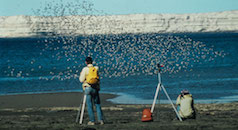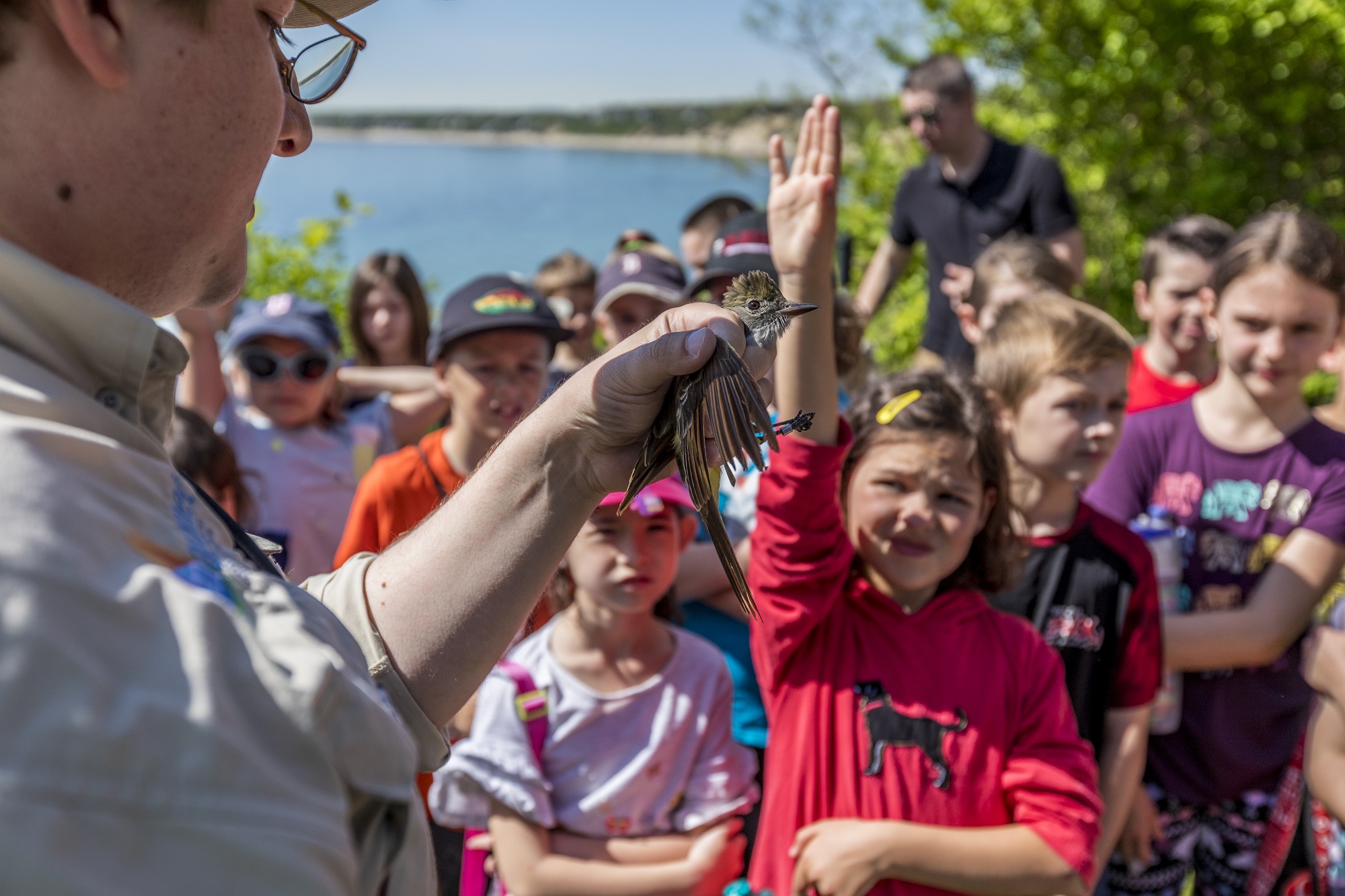More than 350 students have visited the Manomet Center’s banding lab during the first two months of the fall season to learn about birds and their migrations.
Among the visitors were students from the Alden Elementary School in Duxbury, middle school students from Rising Tide Charter School in Plymouth, high school students from Plymouth South High School and graduate students from the Tufts Center for Conservation Medicine in North Grafton.
Overall, the banders have handled 75 different species so far this season, with roughly 1,200 recaptures and over 1,500 new birds.
This season, the banding team caught two birds that have not been captured at Manomet since 1999: a Yellow-throated Vireo and a Cape May Warbler. The team also caught and banded six Eastern Wood-Pewees, a number Bander Samuel Roberts said was unusually high.
Other notable species included a Bay-Breasted Warbler and a Golden-Winged Warbler.
“The Golden-Winged Warbler is becoming an increasingly rare catch as their populations decline in the northeast,” said Banding Director Trevor Lloyd-Evans.
The Golden-winged Warbler often hybridizes with the Blue-winged Warbler, which has been expanding its range north and west. This hybridization is one factor that has led to declines in Golden-winged Warbler numbers.
Banding and education programs will continue at the lab until the end of our fall season in mid-November. The banding team is expecting more than 200 more visitors before the season comes to a close.
“We’ve had people of all ages visit the banding lab so far this fall,” Roberts said. “We’re excited to educate those who will visit over the next month about landbird migration and the trends that have been observed over Manomet’s 48 years of data.”
To view summaries of Manomet’s past banding seasons, visit our landbird publications page at https://www.manomet.org/publications-tools/connecting-nature.
– Eric Robinson





 Back to all
Back to all